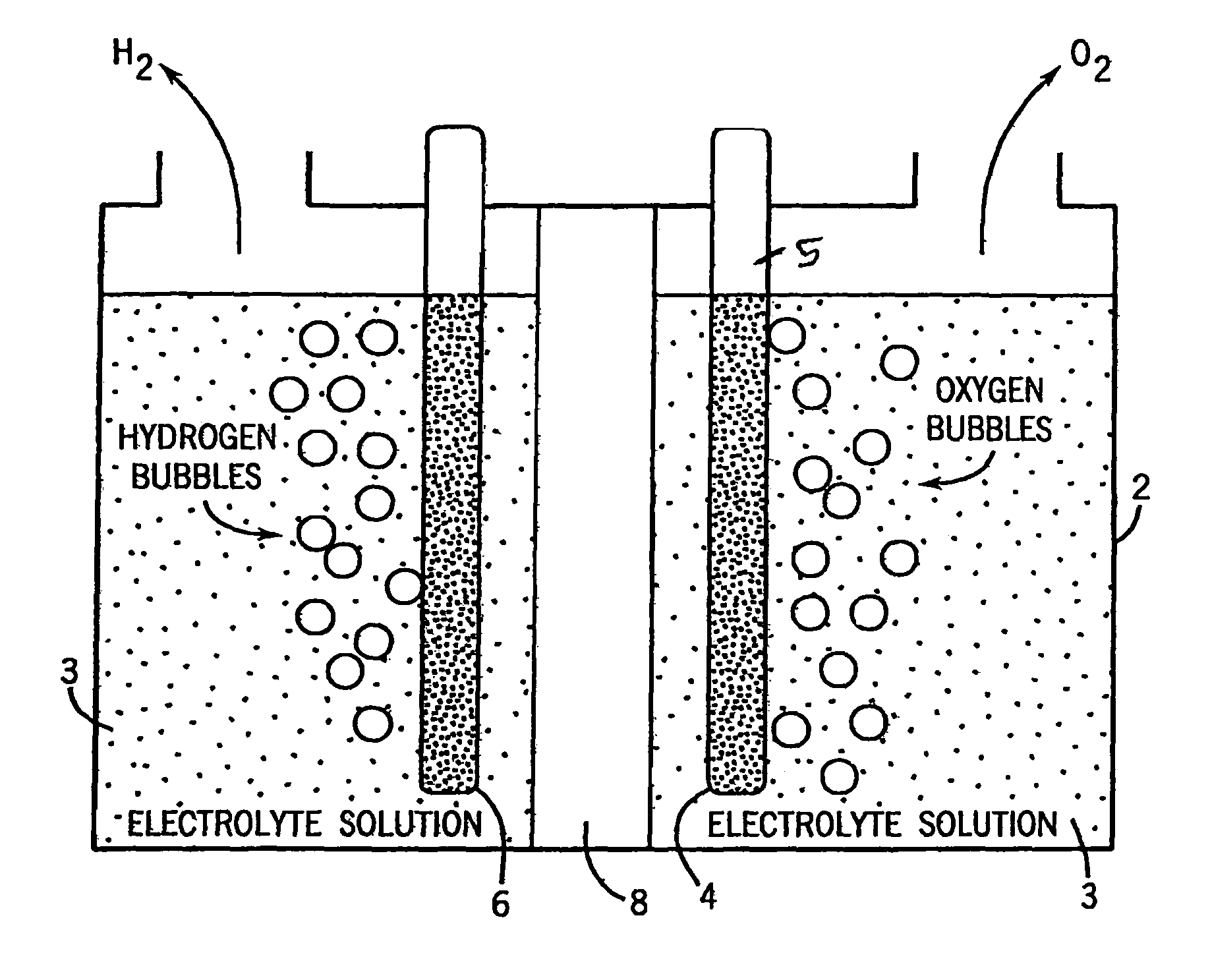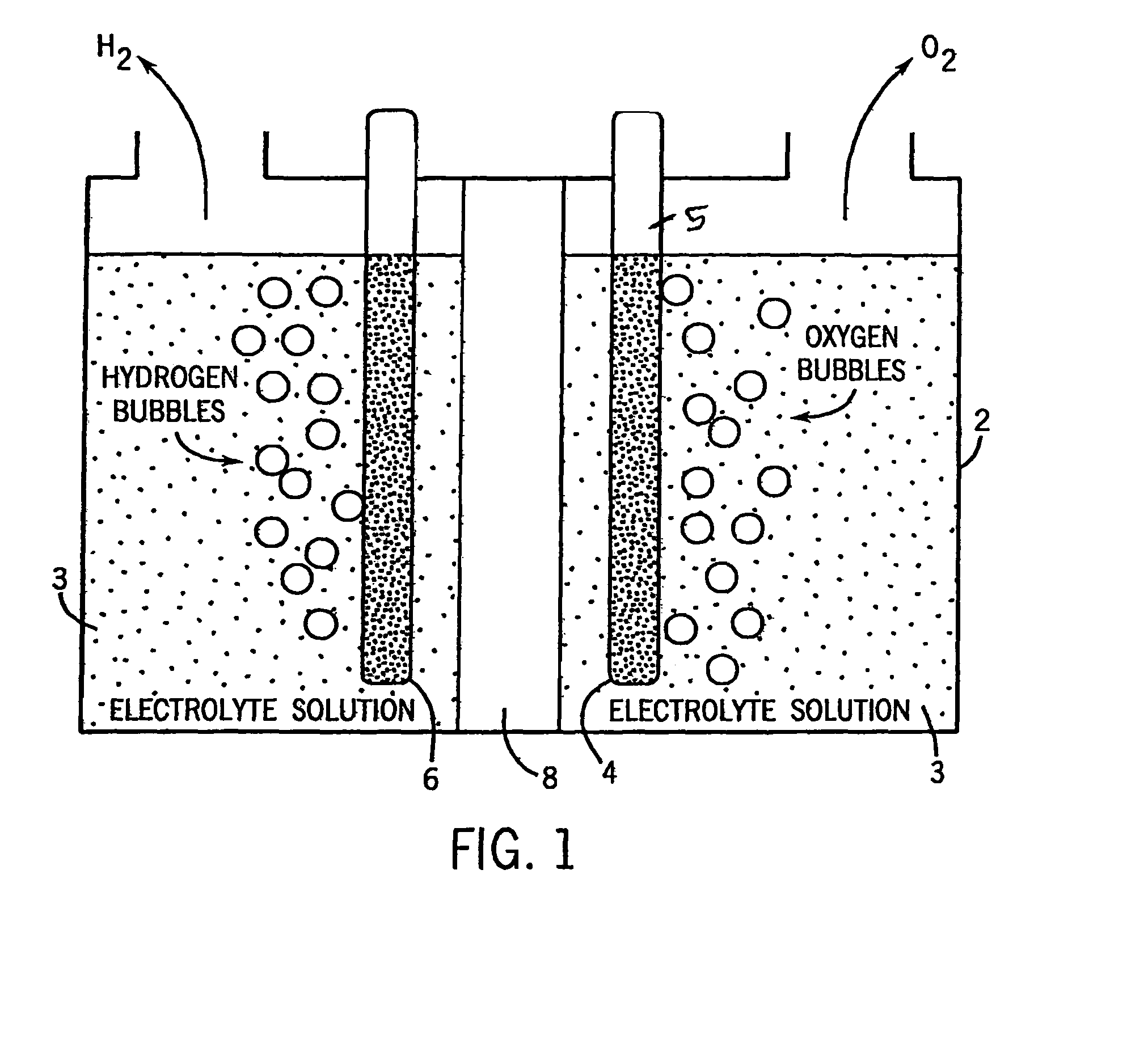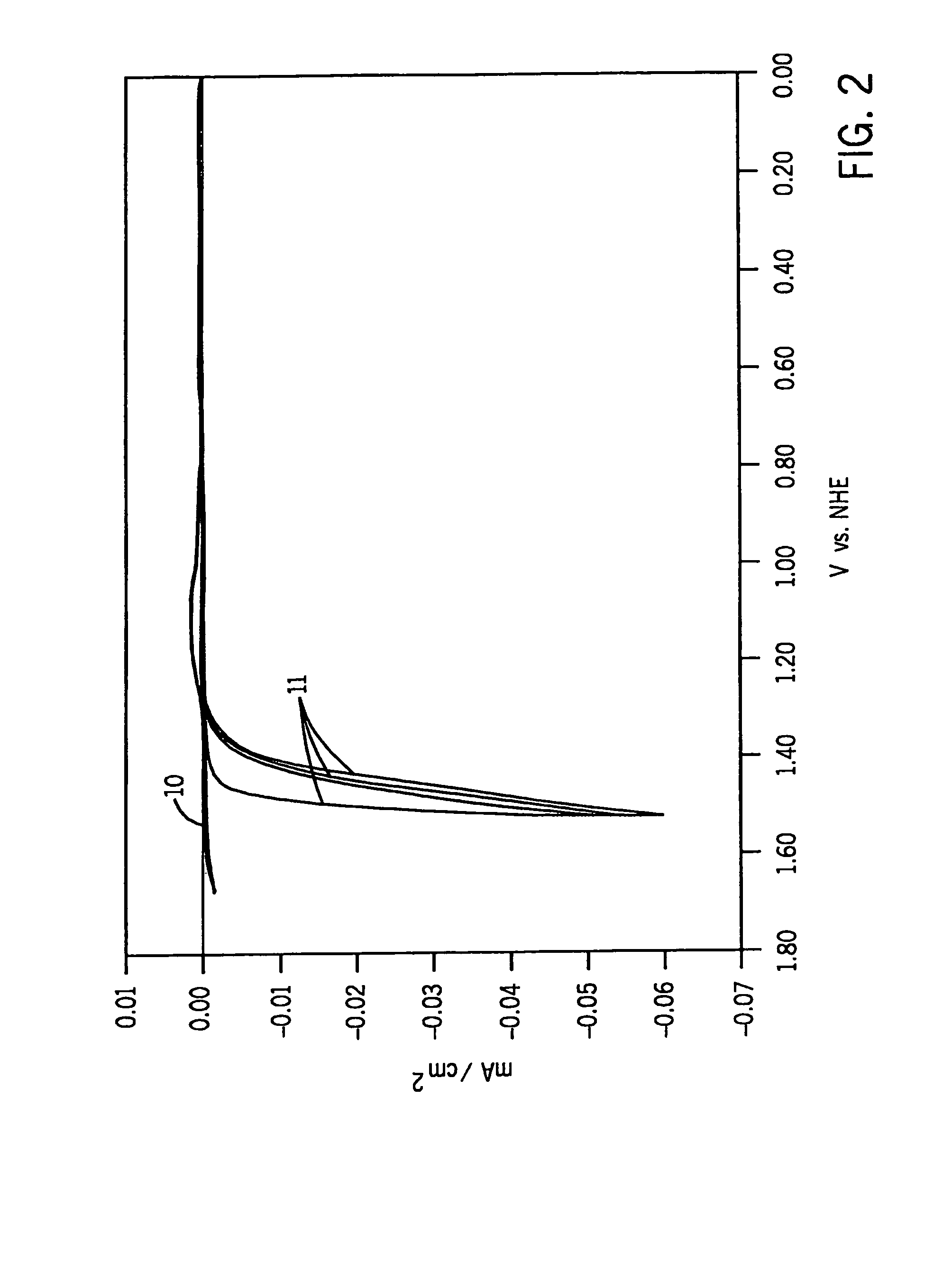Buffered cobalt oxide catalysts
a cobalt oxide catalyst and cobalt oxide technology, applied in the field of catalysts, can solve the problems of significant commercial impediments to implementing their use, ineffective energy-saving process, significant commercial impediments, etc., and achieve low overpotential, high quantity, and increase in current density
- Summary
- Abstract
- Description
- Claims
- Application Information
AI Technical Summary
Benefits of technology
Problems solved by technology
Method used
Image
Examples
Embodiment Construction
[0041]To create one electrolyte solution we add to water cobalt++ cation at around 1 mM, such as by adding CoSO4, CoCl2, Co(NO3)2 or the like. We also add a fluoride anion at a concentration of about 0.1 M. We preferred providing the fluoride anion in the form of a pH buffered mixture of KF and HF. In our experiments with varied pHs the pH was adjusted by the addition of KHF2 or NaOH as needed.
[0042]In other electrolyte solutions we added to water cobalt cation at around 1 mM, such as by adding CoSO4, CoCl2, Co(NO3)2 or the like. We also added our selected buffering electrolyte, typically at a concentration of about 0.1 M or 1 M. All potentials are given relative to the NHE reference electrode.
[0043]In the FIG. 2-FIG. 6 experiments we causes electrolytic film deposition of our catalyst by operating the FIG. 1 device using the aforesaid electrolytic solution at about 1.48 volts (e.g. 1.33 volts to 1.58 volts). Once the anode has been coated with our catalyst, it is no longer critical...
PUM
| Property | Measurement | Unit |
|---|---|---|
| pH | aaaaa | aaaaa |
| pH | aaaaa | aaaaa |
| concentration | aaaaa | aaaaa |
Abstract
Description
Claims
Application Information
 Login to View More
Login to View More - R&D
- Intellectual Property
- Life Sciences
- Materials
- Tech Scout
- Unparalleled Data Quality
- Higher Quality Content
- 60% Fewer Hallucinations
Browse by: Latest US Patents, China's latest patents, Technical Efficacy Thesaurus, Application Domain, Technology Topic, Popular Technical Reports.
© 2025 PatSnap. All rights reserved.Legal|Privacy policy|Modern Slavery Act Transparency Statement|Sitemap|About US| Contact US: help@patsnap.com



